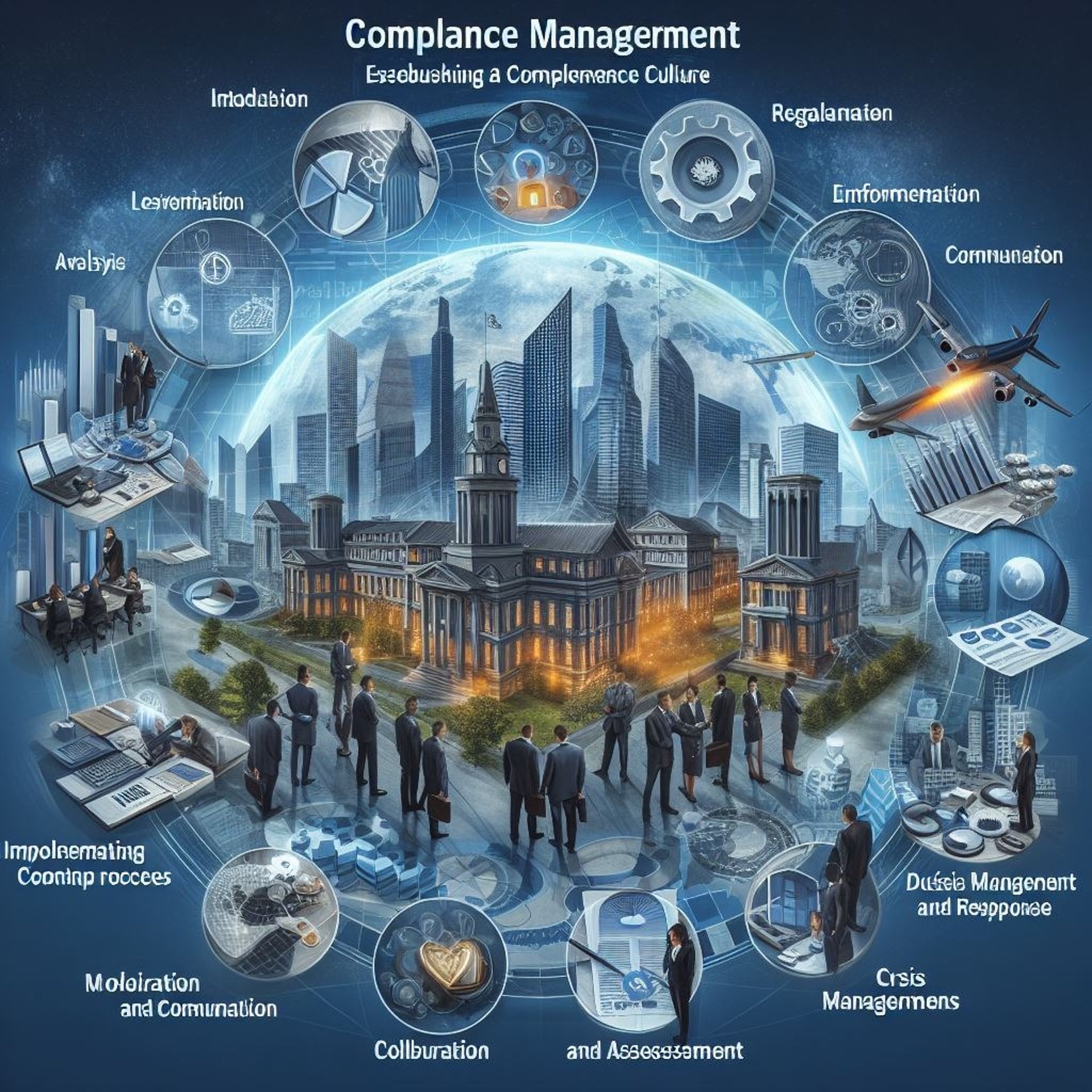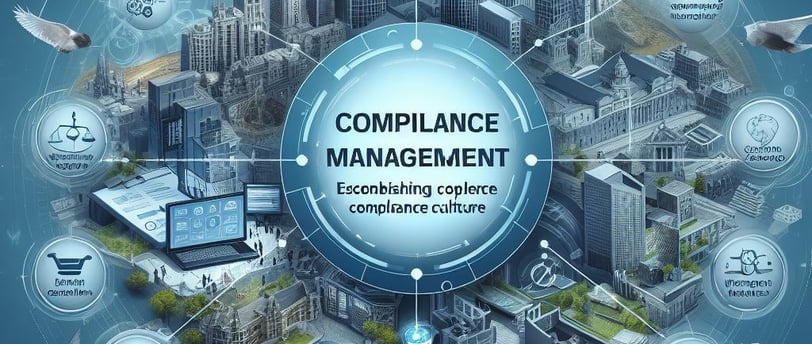
The Key Elements of Effective Compliance Management
This article is a comprehensive, detailed guide to Compliance Management.
BUSINESS CONSULTING
4/29/20244 min read



Introduction
Compliance management is a critical aspect of any organization, regardless of its size or industry. It involves the implementation of policies, procedures, and practices to ensure that the organization operates within the boundaries of applicable laws, regulations, and industry standards. In this article, we will explore the key elements of effective compliance management and how organizations can establish a strong compliance culture.
Establishing a Compliance Culture
A compliance culture is the foundation of effective compliance management. It involves creating an environment where all employees understand the importance of compliance and are committed to upholding ethical standards.
To establish a compliance culture, organizations should:
Leadership commitment: Senior management should demonstrate a strong commitment to compliance by setting a positive example and allocating adequate resources for compliance initiatives.
Clear policies and procedures: Organizations should develop comprehensive policies and procedures that outline the expected behaviors and actions related to compliance. These policies should be communicated to all employees and regularly updated to reflect changes in regulations or industry standards.
Training and awareness: Regular training sessions and awareness campaigns should be conducted to educate employees about compliance requirements, potential risks, and the consequences of non-compliance. This helps to ensure that employees have the knowledge and skills to make informed decisions and take appropriate actions.
Regulatory Landscape Analysis
To effectively manage compliance, organizations need to stay updated on the ever-changing regulatory landscape. This involves conducting a thorough analysis of applicable laws, regulations, and industry standards that govern their operations.
The regulatory landscape analysis should include:
Identifying relevant regulations: Organizations should identify the specific regulations that apply to their industry and operations. This may include local, national, and international regulations.
Understanding compliance requirements: Once the relevant regulations are identified, organizations should analyze the requirements and obligations imposed by these regulations. This includes understanding the specific actions and controls that need to be in place to ensure compliance.
Monitoring regulatory changes: Regulations are subject to change, and organizations need to stay informed about any updates or new requirements. This can be done through regular monitoring of regulatory bodies, industry associations, and legal updates.
Implementing Compliance Processes
Implementing effective compliance processes is crucial for organizations to ensure that compliance requirements are met consistently.
This involves:
Risk assessment: Organizations should conduct a comprehensive risk assessment to identify potential compliance risks and prioritize them based on their likelihood and impact. This helps in allocating resources effectively and implementing appropriate controls.
Designing controls: Once the risks are identified, organizations should design and implement controls to mitigate these risks. Controls may include policies, procedures, systems, and technologies that help in preventing, detecting, and responding to compliance breaches.
Integration with business processes: Compliance processes should be integrated into the organization's existing business processes to ensure that compliance requirements are considered at every stage. This includes incorporating compliance considerations into decision-making, planning, and reporting processes.
Monitoring and Enforcement
Monitoring and enforcement are essential components of compliance management.
Organizations should:
Monitoring: Regular monitoring and review of compliance activities are necessary to ensure that controls are effective and compliance requirements are being met. This can include internal audits, self-assessments, and periodic reviews by compliance officers.
Reporting: Organizations should establish mechanisms for employees to report potential compliance issues, such as a confidential hotline or an anonymous reporting system. This encourages employees to speak up and helps in identifying and addressing compliance breaches in a timely manner.
Enforcement: When compliance breaches occur, organizations should have a clear enforcement process in place. This may involve disciplinary actions, remediation measures, or legal proceedings, depending on the severity of the breach.
Collaboration and Communication
Effective collaboration and communication are vital for successful compliance management.
Organizations should:
Collaboration: Different departments and functions within an organization should work together to ensure compliance. This includes involving legal, finance, human resources, and operations teams in compliance initiatives and decision-making processes.
Communication: Clear and transparent communication is essential to ensure that employees understand their compliance responsibilities and are aware of any changes in regulations or policies. Regular communication channels, such as newsletters, training sessions, and email updates, should be utilized to keep employees informed.
Audits and Assessments
Regular audits and assessments are essential to evaluating the effectiveness of compliance management efforts.
Organizations should:
Internal audits: Internal audits are conducted by the organization's internal audit function or an independent compliance team. These audits assess the organization's compliance with internal policies and external regulations, identify areas of improvement, and provide recommendations for enhancing compliance processes.
External assessments: External assessments, such as third-party audits or certifications, can provide an objective evaluation of an organization's compliance efforts. These assessments may be required by regulatory bodies or industry associations and can enhance the organization's credibility and reputation.
Crisis Management and Response
Despite the best efforts, compliance breaches may still occur. Organizations should be prepared to effectively manage and respond to such crises.
This involves:
Incident response plan: Organizations should have a well-defined incident response plan that outlines the steps to be taken in the event of a compliance breach. This includes identifying key stakeholders, establishing communication channels, and implementing remediation measures.
Investigation: When a compliance breach occurs, it is important to conduct a thorough investigation to determine the root cause and extent of the breach. This helps in implementing corrective actions and preventing similar incidents in the future.
Learning and improvement: Compliance breaches should be treated as learning opportunities. Organizations should analyze the causes of the breach, assess the effectiveness of existing controls, and implement necessary improvements to prevent future occurrences.
Conclusion
Effective compliance management is a continuous and evolving process. By establishing a compliance culture, conducting regulatory landscape analysis, implementing compliance processes, monitoring and enforcing compliance, promoting collaboration and communication, conducting audits and assessments, and being prepared for crisis management and response, organizations can ensure that they operate within legal and ethical boundaries. A strong compliance management system not only mitigates risks but also enhances the organization's reputation and instills trust among stakeholders.
We hope this is helpful. Please let us know if you have any questions.
We appreciate your attention. Please like and share. Thanks
info@buzzyedge.com
